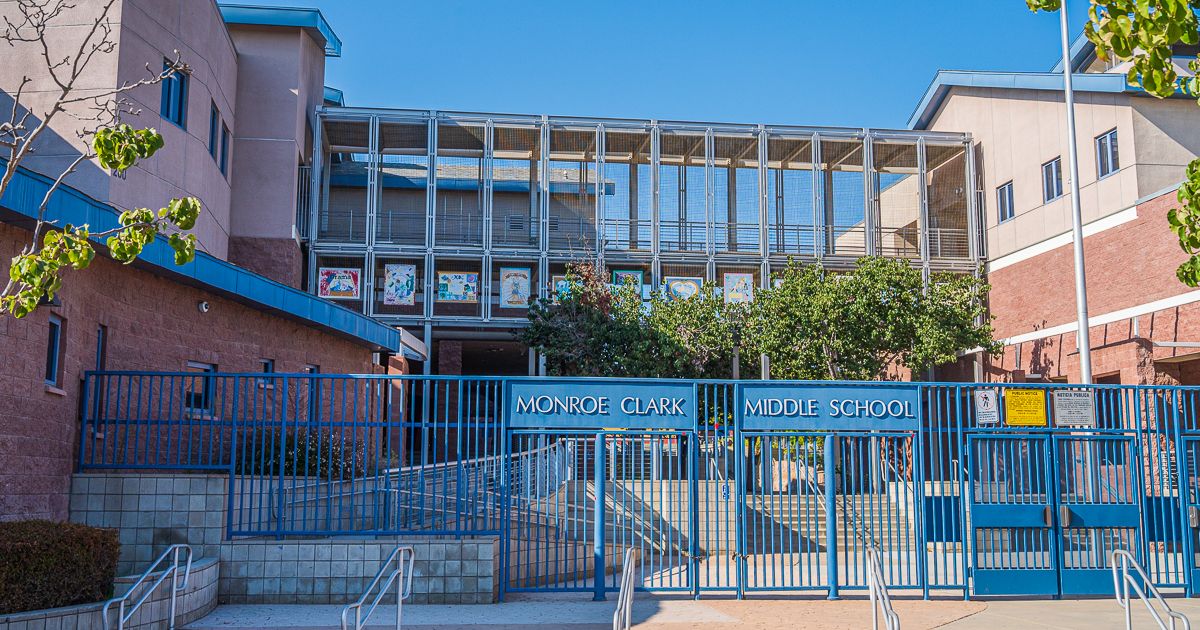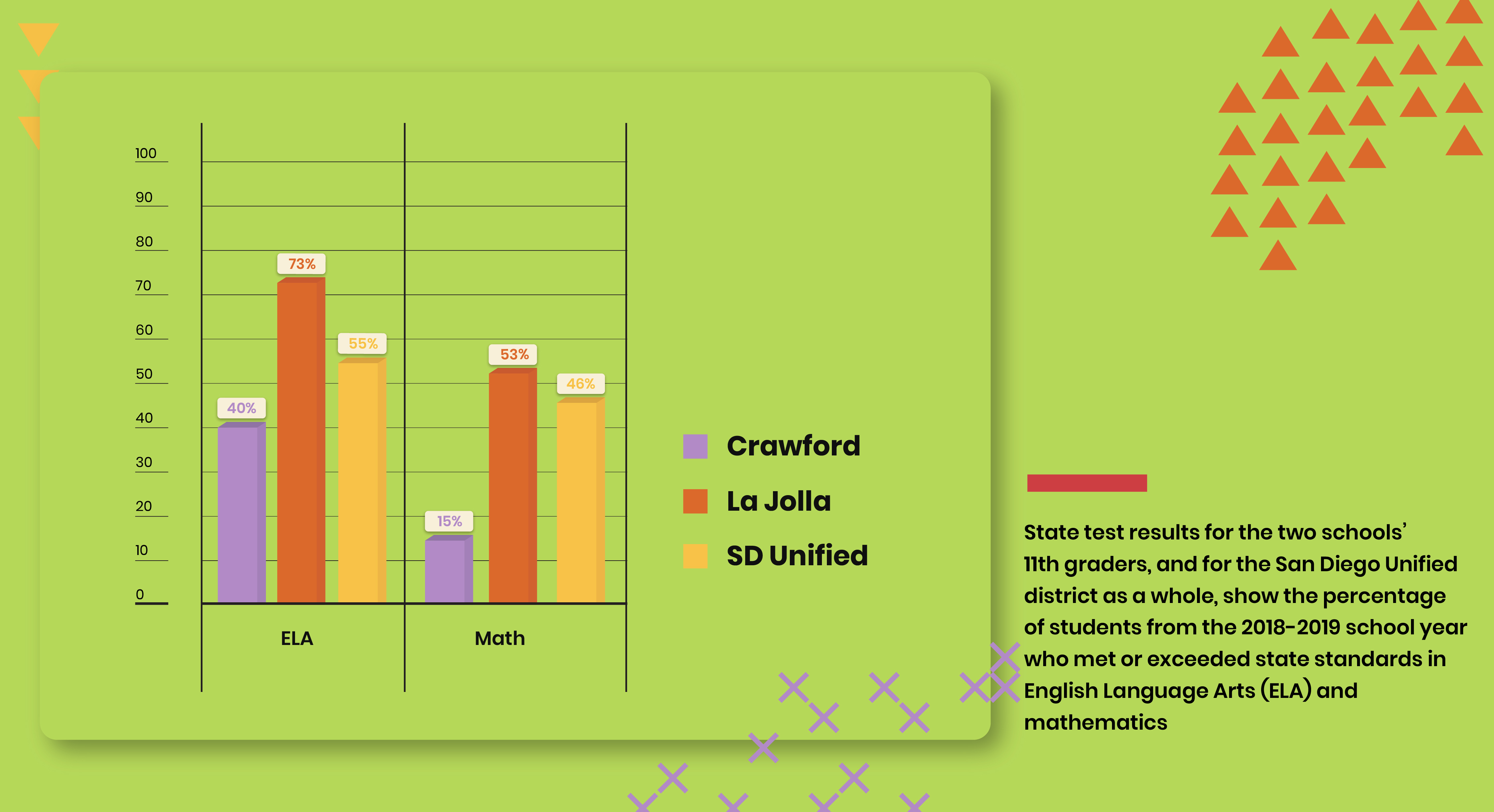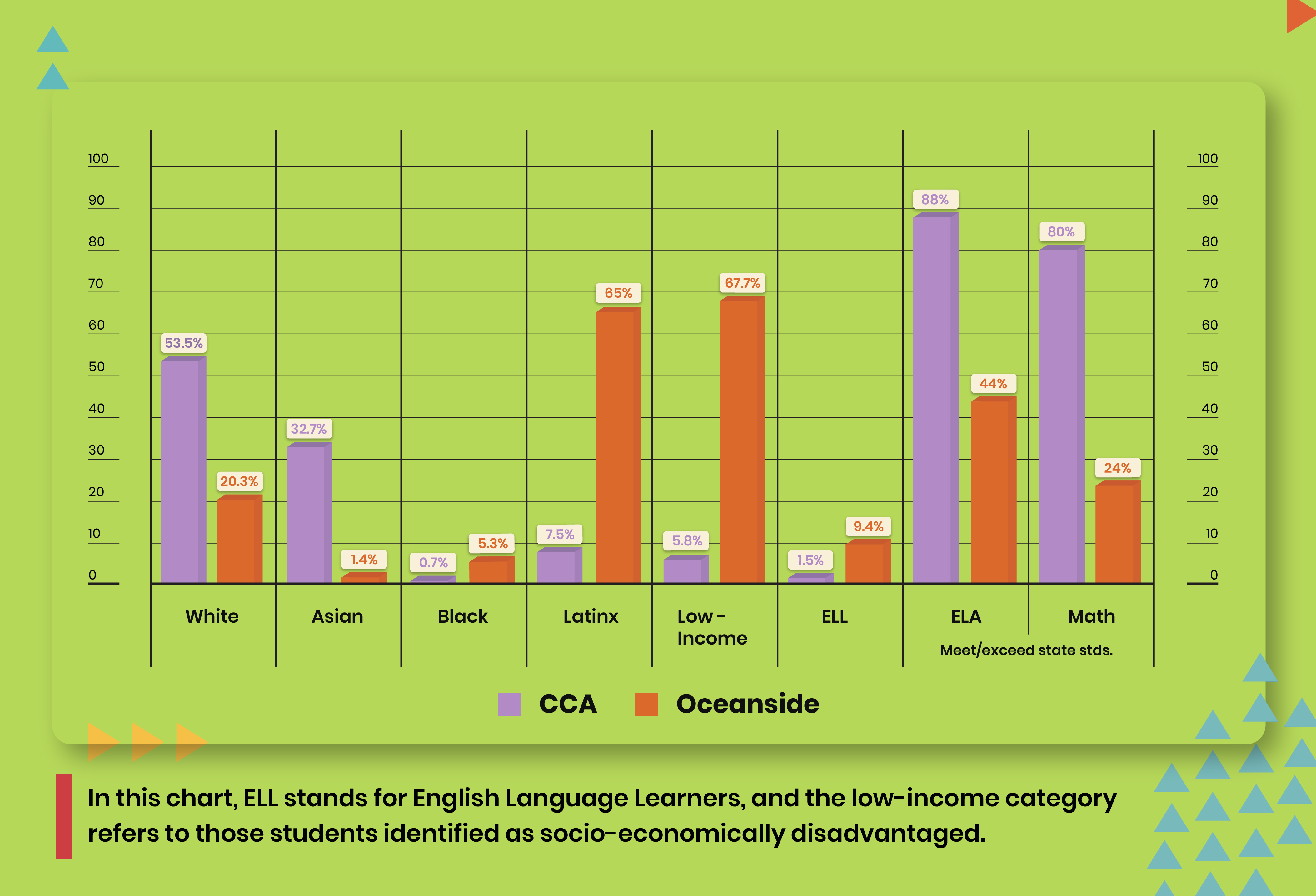How the Education System Fuels Racism, Inequality

This is Part One of a two-part series on racism and the education system. Part Two will be published on Monday, Sept. 28.
The education system is “particularly effective at reproducing racial inequality” and is one of the best examples of structural racism in our society, said author Robin DiAngelo, in a recent talk presented by San Diego’s National Conflict Resolution Center.
DiAngelo, author of “White Fragility,” was featured with Ibram X. Kendi, author of “How to be an Antiracist,” in the Aug. 21 NCRC program titled “A Path Forward.”
Both bestselling books address the issue of racism in the U.S., and both authors are widely recognized for their insights into the history of racist ideology and how to confront the problem in meaningful ways.
“Racism is the foundation of our society, of our country, of our institutions,” DiAngelo said. And one of those institutions is the public education system.
The way schools are funded, she said, contributes to the inherent inequality in education. This ensures the stability of a two-tiered system of education: one for middle- and upper-income families and one for lower socio-economic families primarily with children of color.
Complicating matters further, large and more racially and ethnically diverse school districts, as institutions, tend to have more positions for new teachers available in economically disadvantaged neighborhoods. This can result in less experienced teachers placed with students facing intense challenges.
“Even though many new teachers are well-prepared to skillfully address students’ academic and social/emotional needs, they are just developing their practical skills, learning the system and building endurance on the job under extreme circumstances,” said Jessica Baron, founder and executive director of Guitars in the Classroom, a nonprofit organization that offers music integration training to teachers and students in schools throughout San Diego County.
“Over time, the strain of facing and compensating for the problems of poverty can lead to teacher burn-out.”
Then, more experienced teachers may apply to transfer to less burdened schools once they’ve attained some seniority, under a procedure called post-and-bid.
This is not to say that all teachers post out of low-performing schools. Many dedicated teachers are committed to their students in low-income communities.
“My organization works with outstanding public school teachers who go to the mat every day for their students of color,” Baron said.
Guitars in the Classroom trains teachers and students from preschool to high school on how to use music to enhance education. GITC supports student learning in public schools “by training, equipping and inspiring teachers and school staff to play, sing, lead, compose and integrate music with academic instruction and social/emotional development,” according to its mission statement.
Using donated ukuleles and guitars, GITC helps teachers understand the basics of strumming and singing, to bring lessons to young children through the power of music.
GITC instructors have worked with more than 60 schools in the county, mostly in the San Diego Unified School District, the second largest in California.
SDUSD has an enrollment of about 124,000 students in grades K-12, according to the 2018-2019 San Diego County Office of Education annual report, making up about one-fourth of the total public school enrollment in the county.
“What I see in our Title 1 public schools is a huge expression of compassion,” Baron said, referring to those schools with a low-income student base that receive extra U.S. Department of Education funding. “I see heroic efforts taking place every day.
“Teachers who train with us do not leave their work at the door when they depart school for the day. They are still thinking about their students, considering their needs, and planning something that might engage them in learning, even as they turn out the light.”
At schools in San Diego Unified with high percentages of Black, Latinx, low-income and English learners, Baron said the teachers can be extraordinary.
“Teachers who see the trauma and hunger in their students’ eyes are working beyond normal capacity to make a difference,” she said. “Schools are not well-equipped to fill the great needs that pour in their doors every day, but amazing schools … see these children and families through.”

Elevating Some Children Over Others
Most of San Diego County’s 42 school districts are funded primarily by the state and federal government, based not on overall enrollment but on average daily attendance (ADA). In other words, kids need to show up each day, for the school to receive its allocation of funds for that pupil.
Other school districts in more affluent communities don’t receive their funding based on ADA, but rather primarily through property taxes which are high because property values are high.
These so-called Basic Aid districts include Del Mar Union, Solana Beach, Rancho Santa Fe and the San Dieguito Union High School District, which goes in and out of Basic Aid periodically.
Although attendance is generally high in these districts, Basic Aid districts don’t rely on the need for students to come to school each day to receive their allotment of state funding, unlike ADA-funded schools.
Because test scores that rate a school’s performance has depended on at least 95% of students present to take the tests, struggling schools in low-income neighborhoods have suffered unfairly with bad ratings due to poor attendance.
Students whose families are living at or below the poverty line are less able to attend school regularly, and their absences cost the school critical funding.
“On any given day, the school can lose thousands of dollars in critical funding, because students cannot get to school,” Baron said. “Five days of low attendance can mean a loss of funding equal to a quarter of a full-time teacher’s salary.”
Reasons for absences vary.
For many, transportation to and from school is undependable or unavailable. Families with multiple children can’t always get kids to school if one child is sick or the parent is called suddenly to work.
Substance dependency, high stress or a chaotic environment can prevent adults from preparing children for school. Deportation raids can disrupt family life, as can necessary trips across the border to care for ailing family members.
Housing insecurity or military reassignment or deployment can also contribute to loss of family stability that can lead to lower attendance.
“I don‘t know if you could have designed that (education system) more efficiently to reproduce inequality than the way that we fund schools."
These types of circumstances affect students in Basic Aid districts far less frequently.
Schools with high numbers of refugee children, Baron said, are also tasked with helping young survivors from war-torn countries overcome displacement, trauma, unmet medical needs and the scars of deprivation suffered in refugee camps. This is compounded by a pressing need to learn a new language.
“How can these schools raise standardized test scores or improve attendance rates when they lack adequate funding to provide basics?” she said. “Families in crisis need access to the tools and training to help overcome the cycle of poverty.”
Baron, who has 20 years of experience working closely with San Diego public schools, said social structures are built to sustain white privilege. Yet dedicated teachers work hard to help their students overcome class-based social injustice.
These schools are not reproducing racism, Baron said – they are fighting it. “They fight it hard every day. From top to bottom they fight it.
“They are unwilling channels for racism that is culturally, systemically wired, that expresses itself through schools whose student populations are determined by ZIP codes, economically-driven segregation and access to affordable housing.”
There are, of course, determined students of color who manage to overcome the many obstacles in their path that children from affluent families never encounter. But for far too many, a class-based society with an underlying infrastructure steeped in racism punishes Black and Latinx students simply for being poor.
The result of wealth for schools in rich communities “serves to elevate some children over others,” said DiAngelo at the NCRC online presentation.
“I don‘t know if you could have designed that (education system) more efficiently to reproduce inequality than the way that we fund schools,” she said.
The Stubborn Achievement Gap
The solid connection between ZIP codes and high-achieving students attending schools with experienced, well-paid teachers is indisputable.
Families with disposable income often live in communities where schools are good, and the schools are good because these families live there.
Amplifying inequity even more, schools in these wealthier districts have independent foundations that raise extra money from parents and businesses, which is used to supplement and further enrich student learning.
Hundreds of thousands of dollars are raised by foundations in affluent neighborhoods each year. These donations pay for specialists in music and art, field trips, supplies and equipment, and other enhancements that make the educational environment richer and more expansive.
Scholastic performance is clearly connected to money. Money influences outcomes, and the system is set up to perpetuate the existing White-dominated power structure, DiAngelo claimed.
The stubborn achievement gap, the disparity in academic performance between ethnic groups of students, persists, despite various legislative attempts to address this chronic issue.
White and Asian students continue to perform better than students who qualify for free or reduced-priced meals (an indication of poverty). These low-income students are mostly Black, Latinx, immigrants and English learners.
To illustrate the correlation between affluence and high-achieving students, compare the demographics and achievement levels for two schools in the San Diego Unified School District: La Jolla High School in affluent La Jolla and Crawford High School in the El Cerrito neighborhood in southeast San Diego. Both schools serve students in grades 9-12.
The following information was taken from each school’s 2018-2019 School Accountability Report Card (SARC) found at the California Department of Education website.
From state data, the average teacher salary was $77,562 for Crawford and $85,060 for LJHS.
Crawford had an enrollment of 1,119 students. Only 2.4% identified as White, with 44% Latinx and 29% Black.
Demographics for La Jolla High School, with an enrollment of 1,377, showed 55% White, 28% Latinx and only 1.1% Black.
About 92% of Crawford students were classified as socio-economically disadvantaged (low-income), 33.3% were English language learners, and 6.9% of students were homeless.
About 24% of La Jolla High students were classified as socio-economically disadvantaged, 2.5% were English learners, and 0.6% were homeless.
State test results for the two schools’ 11th-graders, and for the San Diego Unified District as a whole, show the percentage of students from the 2018-2019 school year who met or exceeded state standards in English Language Arts (ELA) and mathematics:

North County
The relationship between achievement and income can be illustrated best when comparing San Dieguito Union High School District’s Canyon Crest Academy and Oceanside High School, with enrollments of 2,572 and 2,195 respectively. Both schools are grades 9-12.
For Oceanside High, 39.44 percent of 2017-2018 graduates completed all courses required for UC/CSU admission, while at Canyon Crest the number was 92.15 percent.
Although both are located in nearby areas of the north coastal region of San Diego County, the statistics from each school’s 2018-2019 SARC are quite different.
In this chart, ELL stands for English language learners, and the low-income category refers to those students identified as socio-economically disadvantaged:

San Dieguito is considered one of the highest performing districts in the county. Students who feed into San Dieguito, which serves grades 7-12, come from the high-achieving elementary districts of Del Mar, Solana Beach, Carmel Valley, Cardiff, Encinitas and Rancho Santa Fe.
Property values in these communities are among the highest in the county, and even the state in some cases. So, high student achievement is no accident.
Teachers in high-performing districts are likely to be experienced and well paid.
San Dieguito’s contract with its teachers union actually includes a clause stating that San Dieguito teachers be the highest paid in the county. And they are.
The district’s average teacher salary, according to the 2016-2017 SARC report, was $103,417. This data is three years old, so the amount is likely to be higher now. And this is the average, not the maximum.
‘Developing a Deeper Divide'
According to the 2018-2019 San Diego County Office of Education annual report, 52% of students countywide are classified as low-income, with enrollment for the entire county by ethnicity as follows:
- 48% -- Latinx
- 30% -- White
- 6.3% -- Asian
- 5.6% -- Two or more races
- 4.4% -- Black
- 3.8% -- Filipino
Compare these county numbers with demographics for affluent school districts, and it doesn’t take an Einstein to see that districts with high property values have a majority of students who are White and few socio-economically disadvantaged.
The correlation between low achievement levels and poverty is clear. More poor kids means lower academic success. And most of those poor students are Black or Latinx.
More money is helpful but is not the only factor in raising student achievement for low-income students, said Shana Hazan, a parent at Franklin Elementary School in San Diego Unified.
“A lot of parents just look at test scores,” she said. “What I know is that test scores are simply an indication of the income and education of the families that go there. That’s the strongest correlation. If it’s a high-income community with well-educated parents, you’re going to see high test scores.”
Wendy Wardlow, former longtime principal of Del Mar Heights Elementary School in the Del Mar Union School District, said, “There’s no question that the schools for all their best intentions are really developing a deeper divide. Look at how we even rate the schools when you have everything just based on simplistic test scores.”
Many factors affect a child’s ability to learn, said Hazan, who is a former teacher in the Chicago public school system. “And it has nothing to do with aptitude and nothing to do with intellect.”
If a child’s family is moving regularly, if the family is struggling with homelessness, if there’s inadequate access to healthy food or if a parent is incarcerated, she said the best school and the best teacher in the world can’t solve those underlying conditions.
“Those are some really hard barriers to overcome,” Hazan said.





